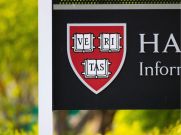Beginning today until May 1, Yale student Aliza Shvarts was scheduled to display her senior art project in an exhibit on campus in Green Hall. She had planned to suspend from the ceiling a large cube wrapped in blood-soaked sheets—blood from her forced miscarriages. She said she would project onto the cube video footage of herself having the miscarriages in her bathroom.
Shvarts told the press that for her project, she had artificially inseminated herself and then taken herbal abortifacients to induce miscarriage. She said that without any medical assistance, she had used a syringe “as many times as possible” to inseminate herself. She declined, however, to name the sperm donors or the number of times she had repeated this process.
On Thursday, news of her art project reached the blog world and sparked a scandal reminiscent of controversy over Saatchi, Mapplethorpe, and Serrano. But the question quickly turned from “Is this really art?” to “Is this really true?” when, later that day, Yale issued a statement denying the veracity of Shvarts’s statements:
Ms. Shvarts is engaged in performance art. Her art project includes visual representations, a press release and other narrative materials. She stated to three senior Yale University officials today, including two deans, that she did not impregnate herself and that she did not induce any miscarriages. The entire project is an art piece, a creative fiction designed to draw attention to the ambiguity surrounding form and function of a woman’s body.
She is an artist and has the right to express herself through performance art.
Had these acts been real, they would have violated basic ethical standards and raised serious mental and physical health concerns.
Yet Shvarts insists that her previous statements were true. According to Yale spokeswoman Helaine Klasky, Shvarts had vowed that if the University revealed her admission, “she would deny it.”
“Her denial is part of her performance,” Klasky wrote in an e-mail message.
“We are disappointed that she would deliberately lie to the press in the
name of art.”
Klasky’s remonstrance is itself troubling. Fiction, of course, can be art, and “deliberate” lying of various sorts may even be intrinsic to the arts. We don’t flinch from Shakespeare’s liberties with English history, the trompe d’oeil paintings of William Harnett, or the sound of the sea in Debussy’s La Mer. The problem with Shvarts’s “senior art project” surely doesn’t come down to her on-again off-again declarations about the facts. Her waywardness with the truth may well alarm the Yale authorities, but their attempt to reduce the controversy to just that is an attempt to dodge the problem presented by Shvarts’s attempt to discover a new frontier in offensiveness and bad taste.
Perhaps the most interesting part of this affair is how helpless Yale appears to be. There is simply no language of moral or aesthetic condemnation available to the University, which has long ago made its peace with the idea that art is “transgressive.” One suspects a simple failure of logic somewhere along the line, e.g. “Good art transgresses, therefore whatever transgresses must be good art.” Now would be a good time for Yale and other universities to reassess their commitment to the aesthetics of petulance. But don’t count on it.
Petulence pretending to the immunities of art typically has to explain itself to overcome the viewer’s sense of being in the presence of sheer incompetence. Shvarts thus explains her work as “a creative fiction designed to draw attention to the ambiguity surrounding form and function of a woman’s body.” Ambiguity? Whatever else we can say about it, Shvarts’ project is singularly lacking in that quality. It is as straightforward a trivialization of sexuality and human life as might spring from the mind of an undergraduate with nothing much to say.
The scandal over Shvarts’s project occurred simultaneously with the pope’s visit to America. While he was here, the pope addressed Catholic university leaders, affirming academic freedom that summons academics "to search for the truth wherever careful analysis of evidence leads you.”
Granted, Pope Benedict wasn’t thinking of the “truths” revealed by the nihilists in the art department. But it does seem to be an opportune moment to wonder: does the doctrine of academic freedom throws its capacious canopy over self-mutilation, prurient gore, and whatever other bleeding provocations can be brought forth?
NAS is skeptical. We defend academic freedom, but not a version of it we fabricated ourselves. We stick with the old AAUP definition that grounds academic freedom in the search for truth, rather than the pursuit of outrage. Academic freedom was never meant to excuse lies or to condone every act under the sun.
We believe that the university should be characterized by integrity, honest dealings, and accountability. Shvarts’s exhibit, let’s say, falls a little short. But we expect to hear from those who think otherwise—who assert any limits at all on free expression are a present danger to the university.
Just yesterday, Yale College Dean Peter Salovey released a statement threatening to prohibit her from showcasing the display, saying, “We will not permit her to install the project unless she submits a clear and unambiguous written statement that her installation is a work of fiction: that she did not try to inseminate herself and induce miscarriages, and that no human blood will be physically displayed in her installation.”
We shall see whether Shvarts decides to submit a statement, and whether it meets the “unambiguous” requirement. If so, Yale will be stuck with a problem of its own making, forced in the name of academic freedom to display work that is little more than self-loathing on parade.













